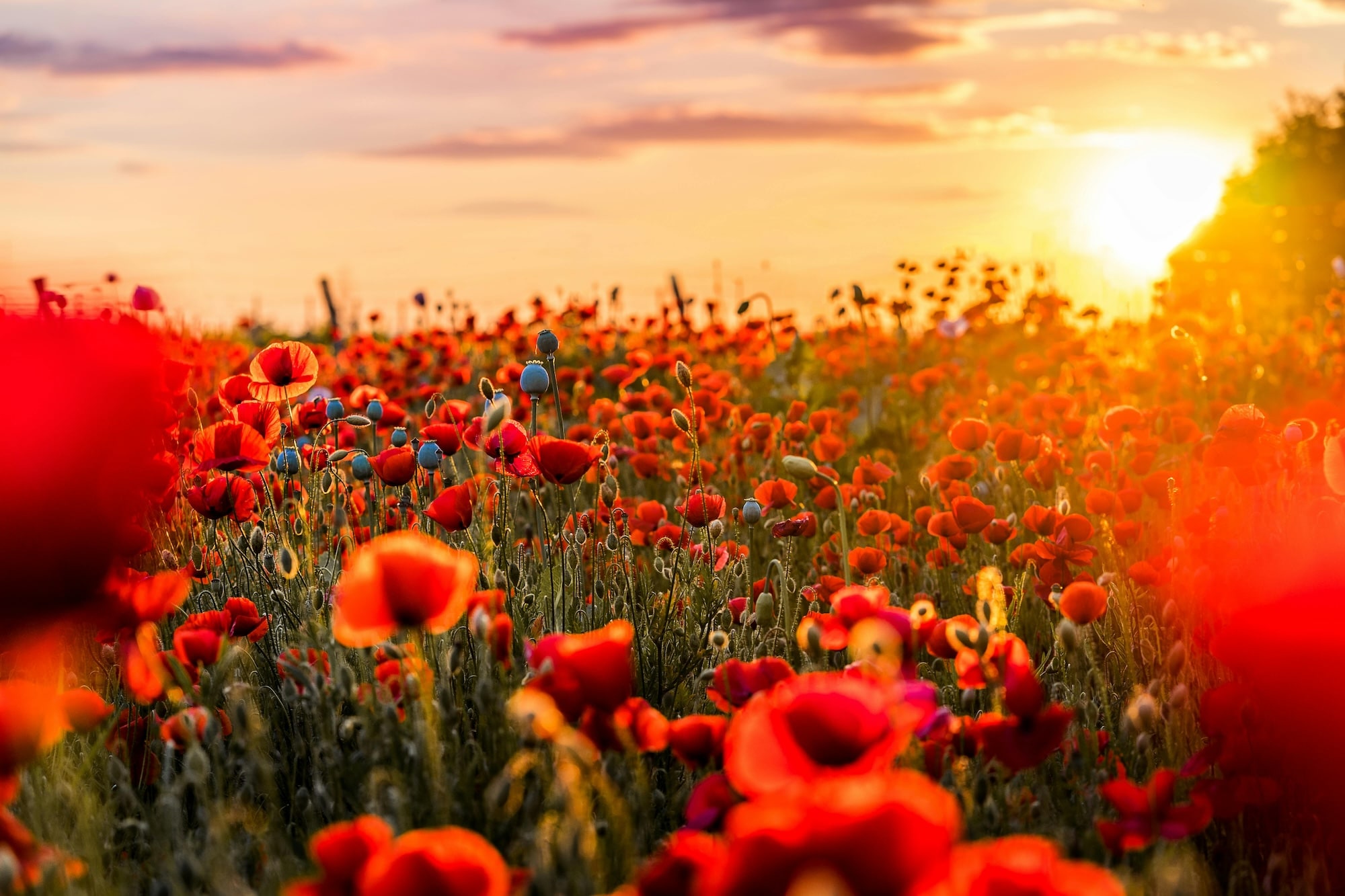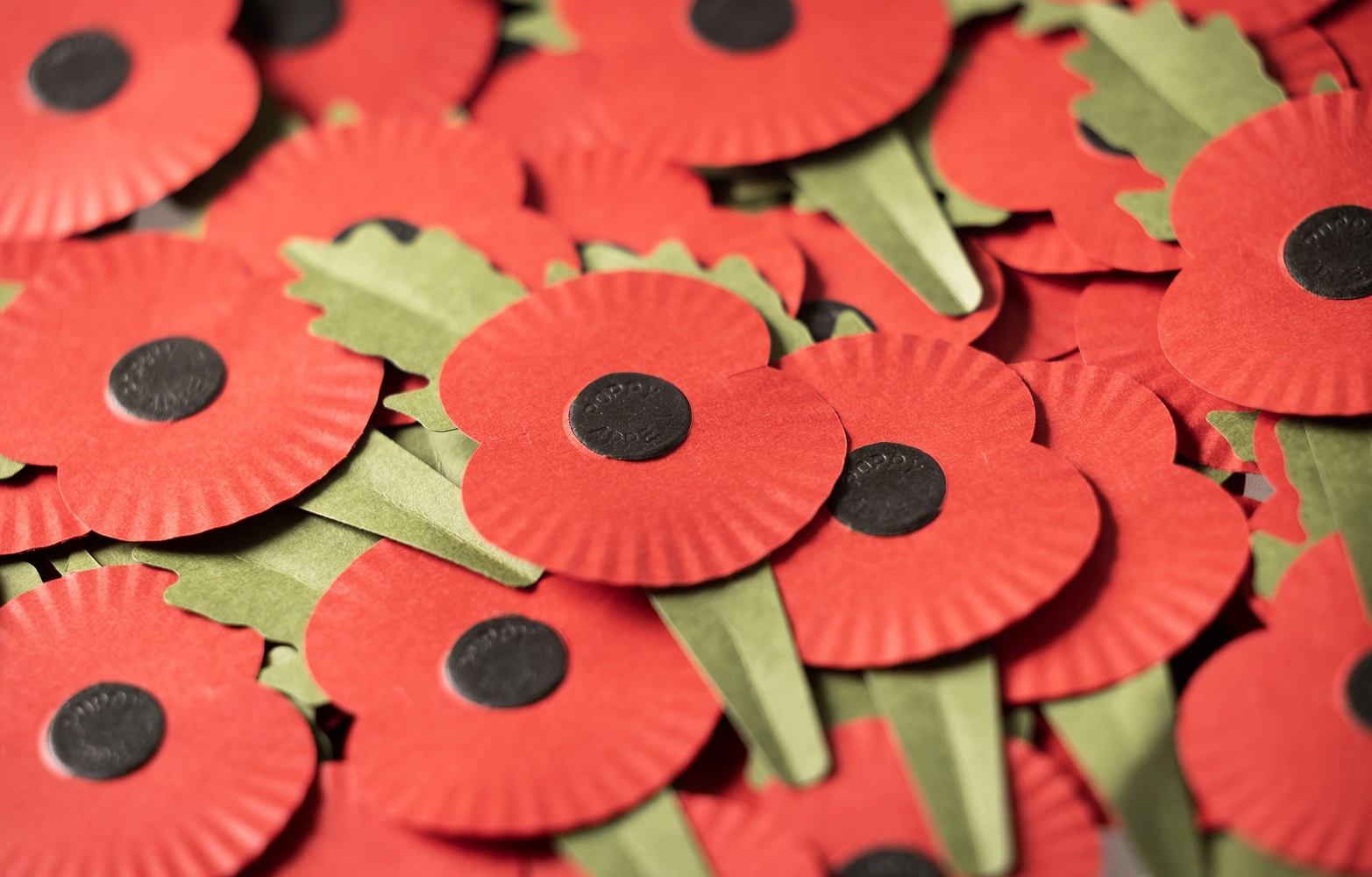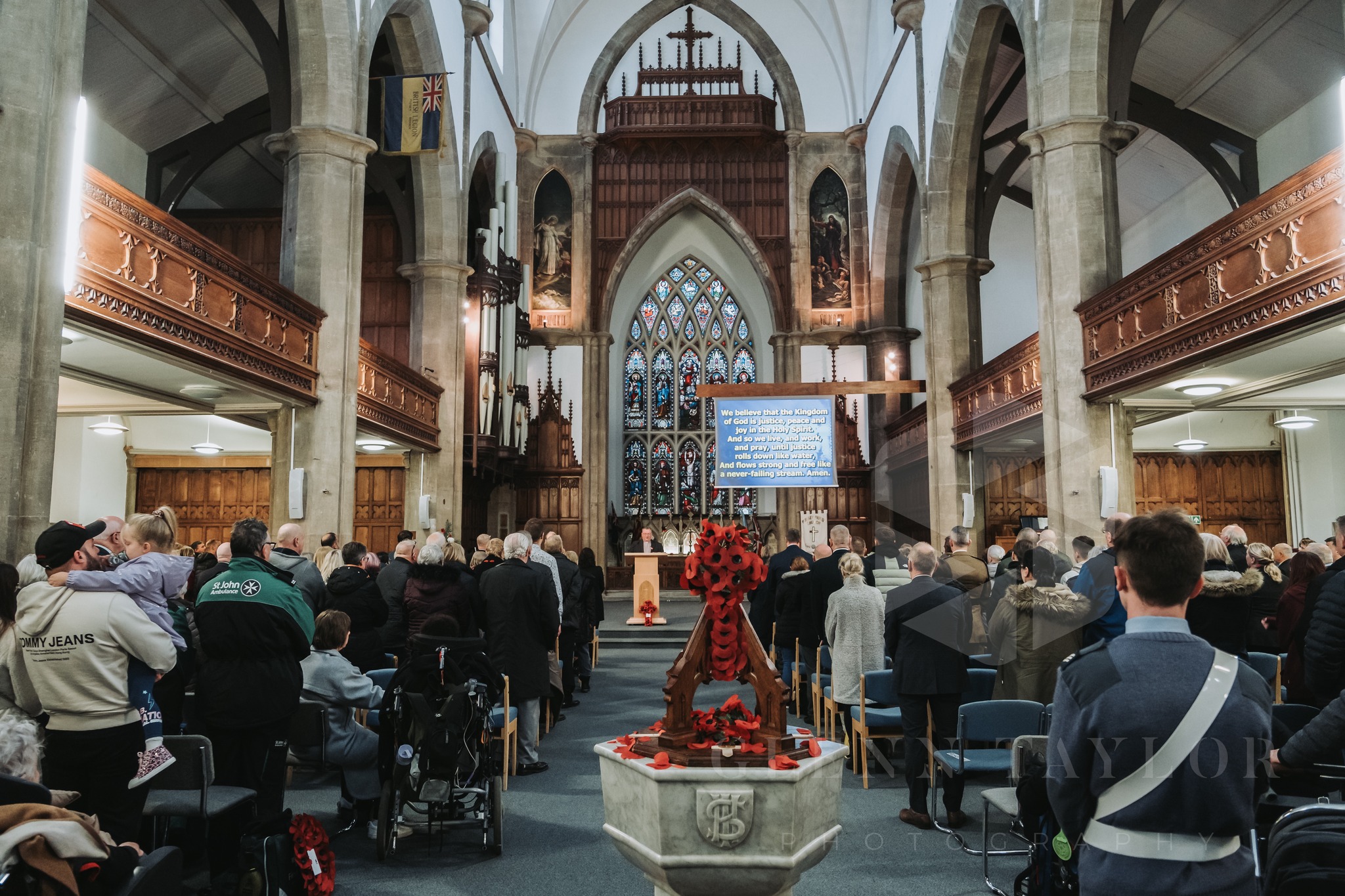From the Battlefields to a Symbol of Hope
The story of the poppy begins on the devastated landscapes of the First World War. In northern France and Flanders, artillery bombardments churned up the soil and destroyed almost every living thing. Yet when the fighting paused, one flower returned in abundance – the red field poppy (Papaver rhoeas).
Its sudden appearance among the graves and trenches caught the imagination of soldiers and civilians alike. The poppy’s fragile beauty, growing in the midst of devastation, came to symbolise both the blood shed in war and the resilience of life.

In Flanders Fields
The most famous association between the poppy and remembrance comes from Canadian doctor Lieutenant Colonel John McCrae. In May 1915, after presiding over the funeral of a close friend killed in action, he wrote the poem In Flanders Fields:
"In Flanders fields the poppies blow
Between the crosses, row on row…"
Published later that year, the poem spread rapidly and resonated deeply with the public. It captured both the grief of loss and the duty of the living to carry forward the torch of remembrance.
The Poppy Becomes a Symbol
Inspired by McCrae’s poem, an American academic, Moina Michael, began wearing a red poppy after the war as a personal act of remembrance. Her idea spread, and in 1921 the newly formed British Legion adopted the poppy as its official emblem. The first Poppy Appeal was launched that year, raising funds to support veterans and their families struggling in the aftermath of the war.
The appeal proved hugely successful – selling millions of poppies and raising the equivalent of over £5 million in today’s money. The poppy quickly became established as the national symbol of remembrance.

Remembrance Today
More than a century later, the poppy remains as significant as ever. Each October, volunteers across the UK distribute millions of poppies as part of the Royal British Legion’s annual Poppy Appeal. The funds raised provide vital support to serving personnel, veterans, and their families.
The poppy is not just a symbol of loss, but also of hope – representing the belief in a peaceful future and the commitment to stand by today’s Armed Forces community. Wearing a poppy is a simple yet powerful act, showing that their service and sacrifice will never be forgotten.

The Poppy in Pudsey & Farsley
Here in Pudsey and Farsley, our branch plays its part every year. Throughout October, we organise stalls, collections, and fundraising events across the community, giving people the opportunity to donate and wear their poppy with pride. Every contribution helps ensure that the Royal British Legion can continue its work supporting those who serve.
When our community gathers at the Cenotaphs in November for Armistice Day and Remembrance Sunday, the poppies worn by young and old alike link us to generations past and future. They are a reminder that remembrance is not just about history – it is about who we are today, and the values we carry forward.
